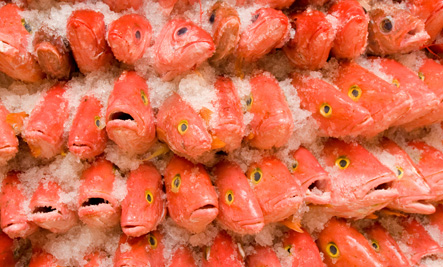The nonprofit ocean protection group called Oceana has been performing a study, the results of which were released last week. The question – whether or not we’re being sold, and therefore eating, the fish we think we are.
Oceana took a sum of around 1,215 fish from 12 different parts of the country and examined them to see if they matched their labels or not. Listed below are the study’s findings.
- About one-third of the 1,215 fish samples bought from 2024-2024 were mislabeled.
- In a collection of 120 samples that were marked as red snapper fish, 28 different species of fish were discovered. Of those, 17 were not even within the snapper fish family.
- Southern California was the region most likely to be misinformed with 52 percent of the samples bought there actually being something different.
- Seattle and Boston had the lowest rate of deception, still with one in every five fish labeled incorrectly.
- Some fish names are altered for marketing purposes to make them sound either tastier or healthier than what they really are
- Tilefish, which contain mercury in their flesh and should be avoided (especially by pregnant women), was found to be sold in New York as Red Snapper and Halibut.
Where you’re most likely to be mislead:
- Sushi Bars topped the list in every city studied on the most likely location to be misleading.
- Restaurants ranged in the middle.
- Grocery Stores are more likely to be honest about their fish labels.
Kimberly Warner, the study’s chief author, told the New York Times that part of the problem here is the numerous fish species in the sea and the common appearance across many of them. “Even a relatively educated consumer couldn’t look at a whole fish and say, ‘I’m sure that’s a red snapper and not a lane snapper,'” said Warner.
Also Read:
Eating Fish During Pregnancy: Be Aware of Mislabeling
Fast-Food Industry Fails to Serve Healthy Fish Sandwiches – 8 of the Best and Worst

